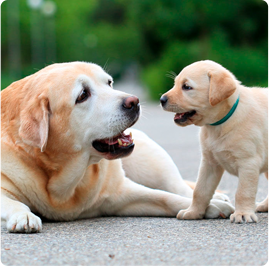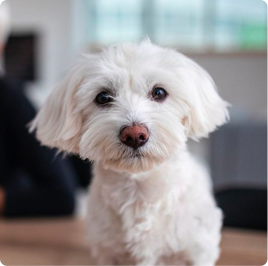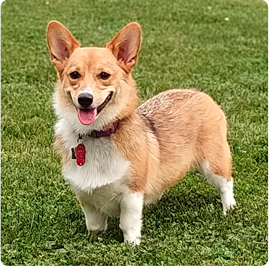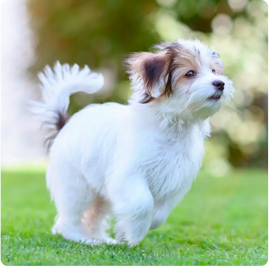Looking to Enrich Your Dog’s Life? 6 Things to Consider
When you hear the word “exercise,” what springs to mind? Chances are it involves running, swimming or some other type of physical activity – the stuff we do with our dogs to tire them out. But mental stimulation is just as important. For instance, Patricia McConnell, PhD, Certified Applied Animal Behaviorist and author of numerous bestselling books, including The Other End of the Leash, said she can teach a dog a new trick in 10 minutes and it will calm him down as much as an hour-long walk outside!
“One of the most important things to keep in mind about enriching an environment for your dog is to remember that their brains need as much exercise as their bodies. Your brain is an energy black hole. It uses more energy than any other part of your body, which is why I don’t understand why I’m not thinner,” McConnell said with a laugh. “But the fact is that we get really tired when we use our brains.”
So she likes environmental enrichment activities in which a dog uses his or her mind to problem solve. One of her favorites is scent-work, such as practicing “Find It” with a toy hidden in the backyard or treats hidden in the house – just be careful not to drop any in your favorite pair of shoes, as McConnell quipped!
“One of the things I love about environmental enrichment that uses a dog’s mind to problem solve, whether it’s an interesting interactive toy or food bowl or whether it’s a new trick that you’ve taught them, is that it can act to relax them,” McConnell said. “There’s a difference between being tired and being relaxed.”
She emphasized that every dog is different – some need a lot of enrichment through physical and mental exercise, while others just need to be cuddled and have their belly rubbed.
“I think knowing your dog is the most important thing for every dog owner to keep in mind,” she said.
For instance, her border collies Maggie and Willie love to herd sheep on her farm. But Tootsie, her older Cavalier King Charles Spaniel, prefers enrichment activities like sleeping on the couch – as well as working as a therapy dog at a children’s hospital by sitting in patients’ laps while they pet her.
“She gets crazy excited to go and then she gets to meet the other dogs and spend some very precious time with very special, very ill, immunocompromised children,” McConnell said. “When she comes home, she sleeps for hours. She’s absolutely exhausted, but she loves it.”
So while there’s no universal advice for choosing the best form of enrichment for your pooch, McConnell said factors to consider include:
- Age
- Breed predisposition
- Interest in new things vs. fear of something new
- How comfortable they are in new environments
- Personality type: shy or outgoing?
- The way they like to play – as McConnell pointed out, “Some dogs like to fetch and some dogs are just like, ‘What? Why would I put that in my mouth?’”
Ultimately, taking care to tailor enrichment activities specifically for your dog will lead to a happy home.
“Thinking of each dog as an individual is key to having a happy dog and being the kind of responsible dog owner we all want to be,” McConnell said.







